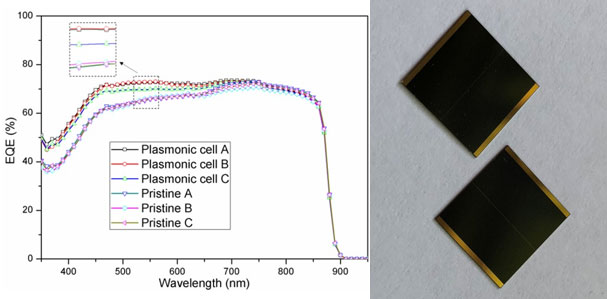Since the first study of noble metal nanoparticles (NMNPs) for enhanced photodetectors Stewart et al. NMNPs have been deeply studied as a potential way to improve the performance of solar cells. The antenna like nmnp range with subwavelength geometry excites the oscillations of conduction electrons near the particle surface by collectively generated local surface plasmon resonance (LSPR) electrons, which are disturbed from their equilibrium positions. Previous studies have shown that NMNPs can be used as local field enhancers or light scattering centers to increase the photogenerated carrier density in various solar cells, and the maximum power conversion efficiency (PCE) is less than 15%. However, for GaAs solar cells, the light capture of NMNPs with different geometries has rarely been compared with the effects caused in GaAs solar cells, although they have been widely recognized for their photocurrent enhancement ability. Effects of PSS / Au ns films with different Au ns concentrations on light absorption and power conversion efficiency of single junction and triple junction GaAs solar cells. The results show that the excellent PCE improvement can be attributed to the unique field enhancement and strong scattering effect of Au ns, which has multiple "hot spots" on the surface of Au ns.

These methods are suitable for the rapid, simple and efficient preparation of GaAs solar cells with common structure. However, using AAO film as template and thermal annealing for NP preparation is quite expensive for commercialization. It is impossible to produce nanoparticles with other geometries and surfaces by this method, such as gold nano stars (NSS) with anisotropic structures and sharp tips, considering the difficulty of making suitable AAO templates, and can not be integrated to generate stronger plasma effect cells in GaAs solar energy through thermal annealing. Therefore, developing a simple but effective method to introduce NMNPs into GaAs solar cells is one of the main challenges to further improve its power and conversion efficiency.